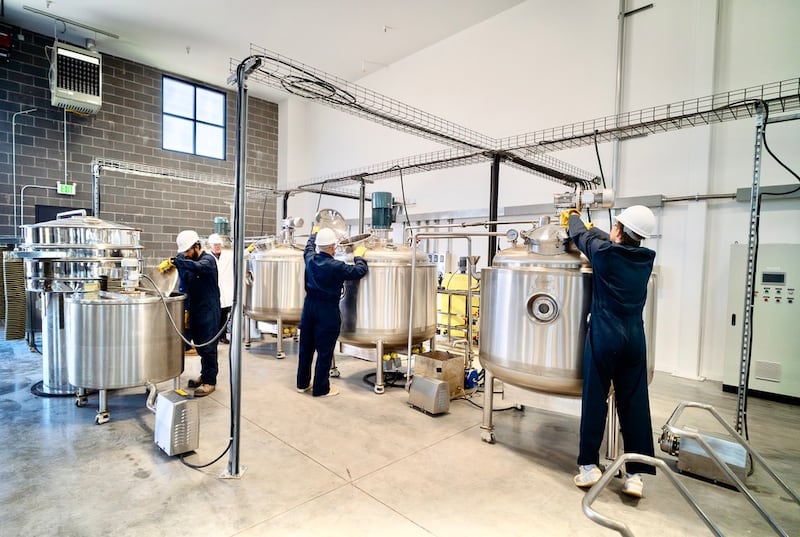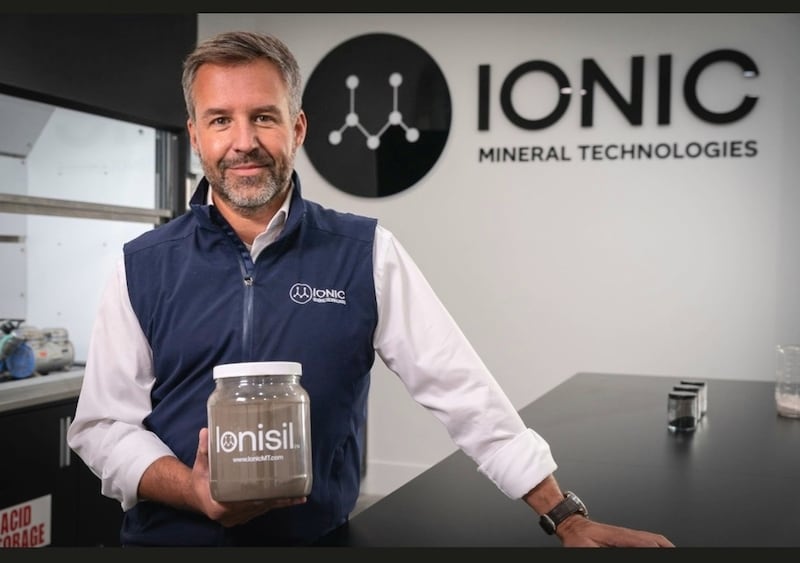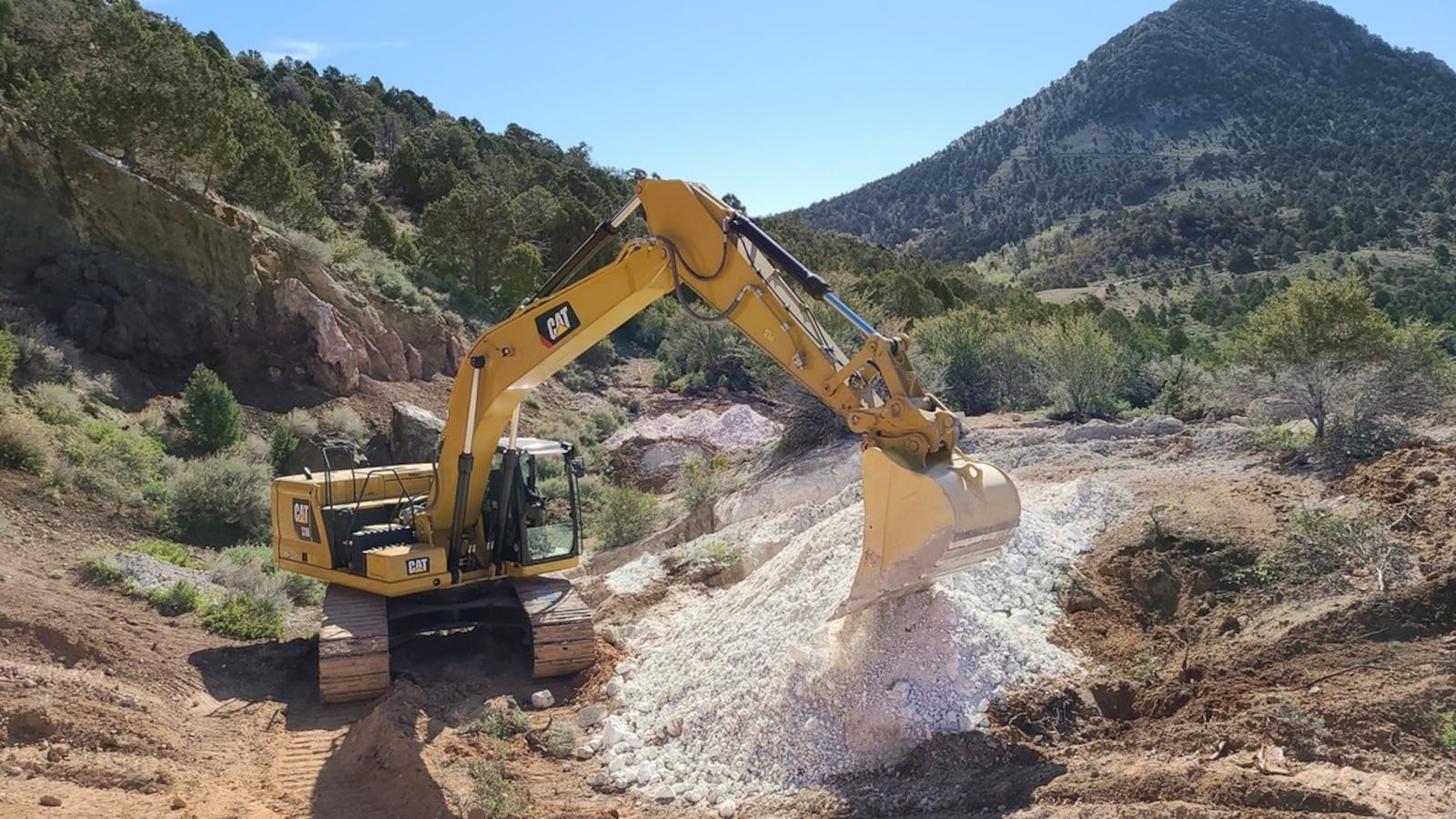This story appears in the February issue of Utah Business. Subscribe.
Range anxiety is the fear of being stranded in an electric vehicle (EV) that’s run out of charge due to the relative scarcity of charging stations, and it’s a central reason why EV ownership in the United States remains below 10 percent.
One Utah-based company might be on the verge of changing that.
“Three things make people hesitant to buy an EV: cost, range and the lack of charging infrastructure,” says Andre Zeitoun, founder and CEO of Provo-based Ionic Mineral Technologies (Ionic MT). “I feel like Ionisil can address all three of those things.”
Ionisil, which is on track to go to market in early 2026, is Ionic MT’s flagship product.
A vital component of lithium-ion (Li-ion) batteries is an anode capable of accepting and storing lithium ions during the charging process, reversing the reaction when a battery discharges. Most Li-ion batteries store their lithium ions in between the rolled layers of carbon atoms that compose graphite.
“In graphite, for every six carbon atoms, one lithium can be held, which limits the capacity,” explains Dr. Sunho Kang, Ionic MT’s CTO.
Appearing directly below carbon on the periodic table, silicon is carbon’s chemical cousin. But where it takes six carbon atoms to hold one lithium ion in graphite, one silicon atom can hold up to four — an improvement of around 24 times. However, in taking on so many ions, crystalline silicon expands and fractures, losing capacity with each charge.
One solution is nanosilicon in tubular form, which retains charging capacity by expanding in a way that resists fracturing.
“About 20 years ago, researchers figured out that silicon in nanotubes would work, but manufacturing them requires expensive and sometimes toxic gases in a very costly process,” Kang explains, adding that the ideal solution would be to find this form of silicon pre-made, in nature.
That’s where Utah comes in.

Mineral wealth
Eureka, Utah, is home to the largest known deposits of the mineral halloysite, a form of clay notable for its porous, tubular nanosilicon structure. Ionic MT has a claim to a large portion of that land as well as an inexpensive process for extracting tubular nanosilicon from halloysite.
“There are small occurrences of halloysite around the world, but they’re not necessarily commercial deposits. On our 500-acre property, we have reserves of about 2.4 million tons. That would work out to about 500,000 tons of nanosilicon, which would support about 50 million vehicles,” Zeitoun says, adding that Ionic MT’s recently leased 4,000-acre property is expected to produce still many times more halloysite.
Kang captures Ionisil’s core value proposition by describing the way it disrupts a longstanding tradeoff the EV industry has been forced to make, given higher energy density Li-ion batteries take longer to charge.
“There is energy density and there is power density. Energy decides driving distance. Power decides charging speed,” Kang explains. “Typically, we can’t have both, meaning we give up some driving distance to reduce charging time or vice versa. By adding silicon to the cell, we can actually have both.”
Seem too good to be true? It gets better.
According to an independent audit by Minviro, at least 90 percent less carbon is emitted manufacturing Ionisil than graphite anodes. The byproducts of Ionic MT’s refining process are not only non-toxic but useful — medicinal magnesium oxide and efficiency-boosting high-purity alumina. Halloysite is mined on the surface, and once extraction is complete, any affected flora is replanted with nothing artificial left behind. Finally, Ionisil is sourced and manufactured entirely in Utah, while all but a fraction of graphite is imported from China.
“China has managed to corner the graphite market, and it’s very risky,” says Dean Wheeler, a professor of chemical engineering at Brigham Young University who has developed his own method for extracting nanosilicon from halloysite.

Shifting gears in global EV markets
Given the current administration’s views on tariffs and the resulting high probability of a renewed trade war with China, that risk may soon be more than just theoretical.
“The Chinese government announced they’re regulating the export of graphite,” Zeitoun says. “If we get into some kind of trade war and they were to ban graphite the same way they’ve done with the rare earth [minerals] in the past, it could cripple the entire EV industry, leaving silicon the only other material that could be used in its place.”
Zeitoun says China is also attempting to dominate the first-generation silicon anode market with only mild success since its offerings are non-tubular and thus limited to being a very low-level graphite supplement.
“Next-generation silicon is where the huge growth will come from,” Zeitoun says, predicting this $1 billion industry will surpass the $200 billion mark by 2031.
While Wheeler also predicts high demand for Ionisil, he’s quick to note one undeniable downside — the fact that there will never be enough of it.
“There’s enough demand for Lithium Ion battery materials, including silicon, that all the halloysite reserves here in Utah would probably only meet world demand for a few years,” Wheeler says.
It’s understood that Silicon Valley became the tech hub it is today because it sat at the intersection of strong ties between research universities and industry, abundant venture capital, a culture of innovation, a large, well-educated workforce, and a pro-business government. Every one of those factors describes Utah today.
Could Utah Valley become Nanosilicon Valley? Considering that Utah has the “world’s largest deposit of high purity halloysite” — and should demand meet Zeitoun’s expectations — other companies are sure to follow Ionic MT’s lead.

